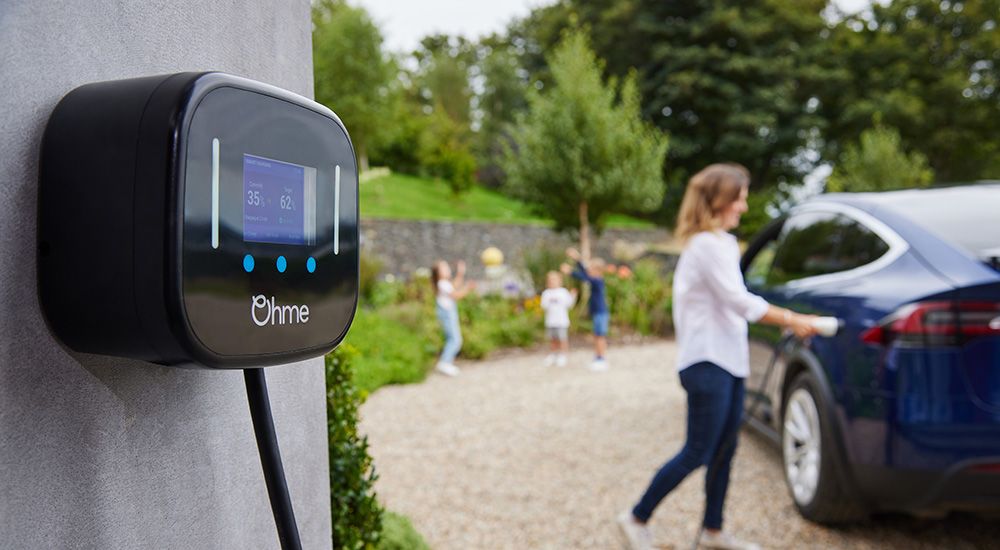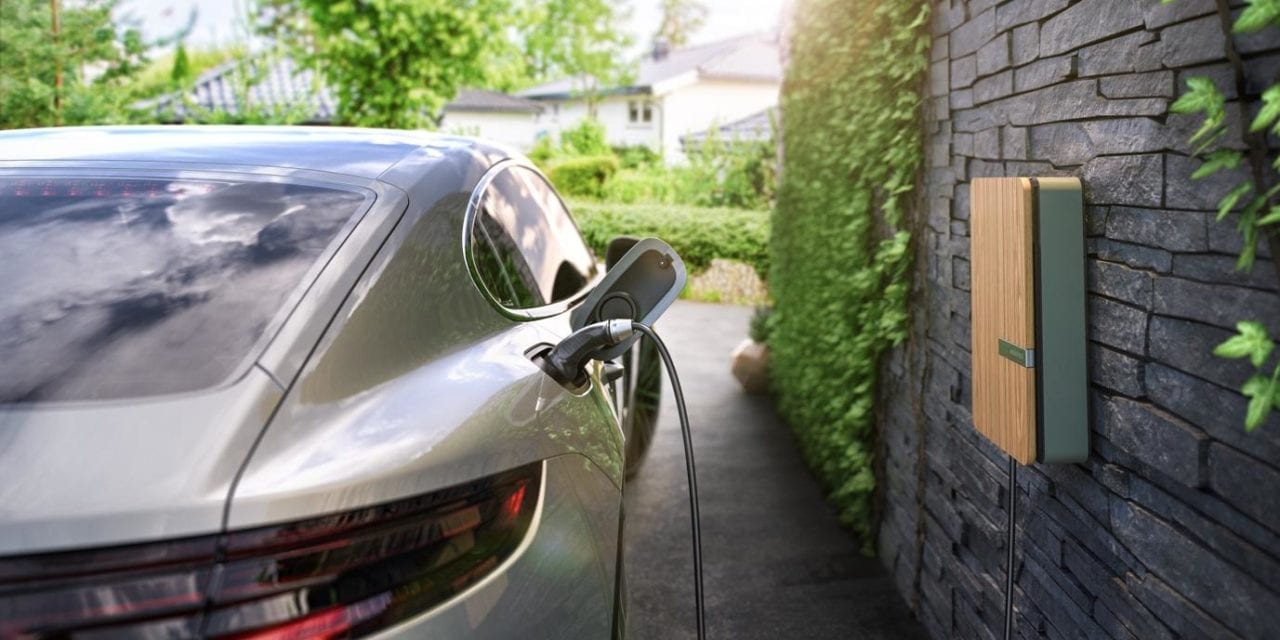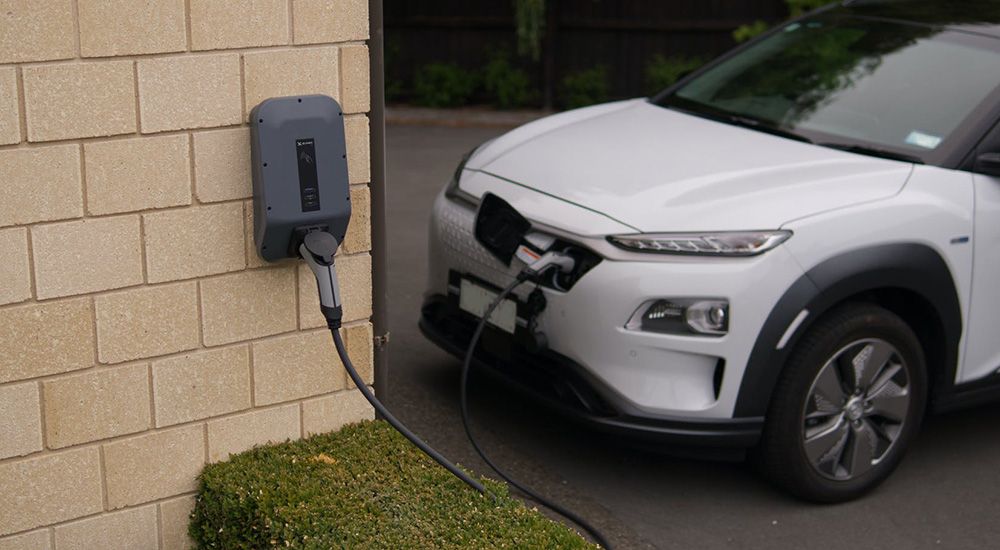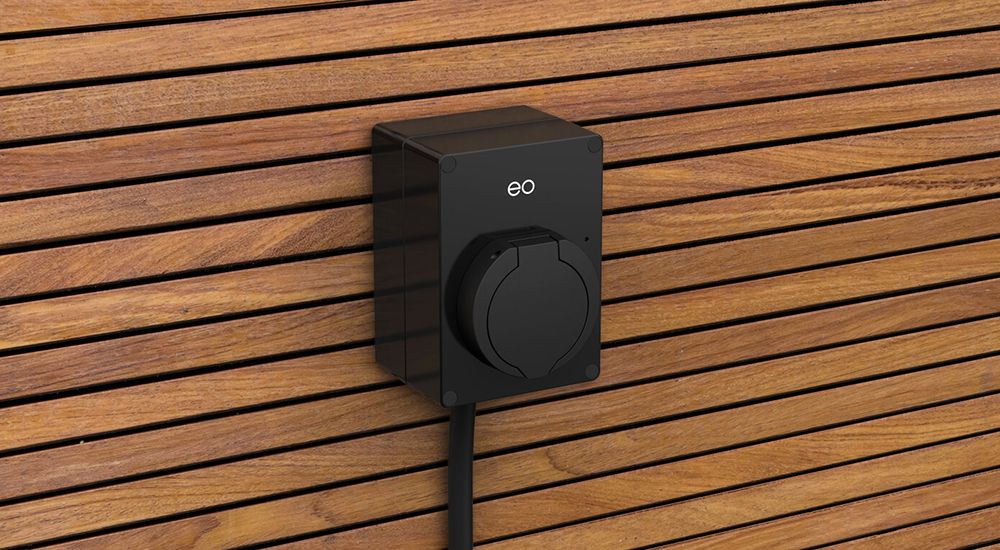We look at all the various factors to consider when picking a home EV charge point, from power output and charging times, to smart units and wallbox types.
Home EV charger power

There are two core power outputs for home EV charge points in the UK - 3.6 kW and 7.2 kW. These are often shortened to 3 kW and 7 kW, but are the same potential output for users, and it all comes down to the normal home electricity supply of 230 V. Charge points are rated at either 16 A or 32 A, which gives two simple sums: 16 x 230 = 3,680 watts or 3.6 kilowatts, or 32 x 230 = 7,360 watts or 7.2 kW.
There are faster ways to charge a car at home, but a three-phase supply is required, which multiplies either of those values by three - 11 kW or 22 kW. These are rarely found for home points however, because the UK’s standard supply is single phase, so it’s uncommon to be able to source at domestic locations. Commercial properties are more likely to have this set up, and it’s also more likely to find 11 or 22 kW units at public car parks.
Many cars will only accept up to 3.6 kW (usually plug-in hybrids or older pure-electric models) or 7.2 kW, so any higher power is not going to make much difference for a number of models. To upgrade a supply to three-phase would not likely be cost effective for a location, unless building and installing that supply from scratch, or upgrading it for other requirements at the same time.
Home EV charging times

Some simple maths is required to calculate how long it will take to charge a car off a home EV charge point. The equation will Gove a good rule of thumb for any charger, but works ore accurately for slower chargers such as 3 or 7 kW units, as the rate of charge will remain steadier than high-power points
As such, divide the car’s usable battery capacity by the charger rating - and then usually round up to make sure you’ve given the car enough time to charge. As such, if a car with a 50 kWh battery requires a full charge from a 7.2 kW point, it will take seven hours (50 / 7.2 = 6.9).
Rarely, if ever, will a driver need to charge from zero, so this maths is slightly more complicated in day to day life, but if there’s 20% charge remaining, start by finding out 80% of a 50 kWh battery (50 x 0.8 = 40) and then divide that by the charger power - in this case around five and a half hours.
These will vary from car to car, unit to unit, and drivers will quickly become accustomed to how long it will take to charge their car. It is also something that often makes little difference, because they will plug the car in to charge overnight, when it’s usually not needed, and then wake to a car charged to how they like it.
Saving EV charging costs

Adding an electric vehicle to your electricity supply demands will see a significant increase in your bills. This is more than off-set by the reduction on fuel costs, but it will see electricity costs increase anyway.
As such, there are various ways to minimise the impact of running an EV on your electricity bill. Many households will be able to switch to an Economy 7 tariff, or even a dedicated EV tariff, which usually gives significantly reduced electricity prices during off-peak demand, such as overnight.
Most EVs and some charge points will allow drivers to set charging timers or maximum charge limits, so that owners can plug their car in and make maximum use of cheaper electricity.
Home EV charger types

There are two main types of charger beyond the power rating - tethered and untethered. This refers to the cable, and either describes whether it is attached to the charge point, or whether the charger is a plug-socket.
Most EVs come with a charging cable which will fit into public charge points, but if not, these can be bought easily should the driver require an untethered charger. Untethered units offer the greatest flexibility because an EV driver will use their own cable to plug in, rather than be restricted by the plug attached to the cable fitted.
However, since the European standard is a Type 2 plug/inlet, the vast majority of EVs have this socket in their car. As such, having a tethered charger will be useful for most drivers, since only older Nissan Leafs (1st gen), Mitsubishi Outlander PHEVs, and a handful of other models, will not be able to charge from the tethered point. Going forward, things are highly unlikely to change either, and since most EVs have a Type 2 inlet, visitors and other EVs will be able to use the point too.
It saves getting a cable out of the boot or from wherever it is kept, but is ultimately a little less flexible in what can charge from the unit - so it’s a balancing act as to what the owner prefers. Unless you own an EV with a Type 1 inlet, or have one regularly visit your house, it’s probably simplest to have a Type 2 tethered wallbox fitted.








